Meiji Jingu, a Shinto shrine building in Shibuya of Tokyo, offers traditional Japanese architecture and changing picturesque views, which is a serene blend of history, culture, attracting the most visitors in Japan every year. At the same time, with expansive vegetation coverage, the shrine offers lots of powerful spots.
Not only is Meiji Shrine a natural oxygen bar and mental battery, but it is also a sacred place to hold traditional Japanese weddings. There are two large camphor trees, “Meoto gusu”, holding together like a couple embracing each other, which carries auspicious significance for a good marriage.
To escape from bustling city life or gain a purification of body and mind, embark on your travel to Tokyo and put Meiji Jingu Shrine first on your must-visit list among Tokyo shrines; it won’t let you down!
Table of Contents
Tokyo Meiji Jingu Facts
Why Meiji Jingu is Tokyo’s Spiritual Heart
Most Popular Meiji Jingu Travel Route
Top Experiences & Must-See Sights at Meiji Jingu
How to Pray at Meiji Jingu
How to Get to Meiji Jingu
Meiji Jingu Opening Hours
Insider Tips for the Best Visit
Attractions Nearby
FAQs about Meiji Shrine
Tokyo Meiji Jingu Facts
Japanese name: 明治神宮 (Meiji Jingū)
Height: 12 meters (39.4 ft)
Address: 1-1 Kamizonocho Yoyogi, Shibuya-ku, Tokyo
Opening hours: Open all year from early morning to sunset (specific time varies by month)
Closed: No holidays; Thursday for Meiji Jingu Museum
Entrance ticket:
500 yen for maintenance cooperation;
1,000 yen for adult admission to the Meiji Jingu Museum;
900 yen for high school students and youngerSuggested visit duration: 1-2 hours
Best time to visit: Early mornings on weekdays
Why Meiji Jingu is Tokyo’s Spiritual Heart
A Forest Oasis in the City
More than 100,000 trees spanning 365 species are planted in the Meiji Jingu forest, which was donated nationwide to commemorate the establishment of the shrine in 1920. The forest is an ideal place to spend leisure time in central Tokyo.
Living Cultural Heritage
Renowned for its forest, architecture, and cultural significance, Meiji Shrine is a living cultural heritage site in Tokyo, hosting 3,000+ Shinto ceremonies per year, including weddings, tea rituals, and Kagura dances.
Legacy of Emperor Meiji and Empress Shoken
Meiji Jingu was established in 1920 to commemorate Emperor Meiji and his wife, marking Japan's transition from feudalism to modernism, which played a significant role in the Meiji Restoration. The shrine later went through the post-WWII reconstruction after being destroyed by fire during the WWII period, symbolizing Japan’s recovery.
Architectural Marvels: Blending Tradition and Modernity
The Meiji Jingu Shrine is a mixture of Japanese cypress and traditional craftsmanship. A lot of Shinto architecture standing inside the Meiji Jingu belongs to the typical combination as well, including torii gates, Honden (main hall), and Shinsenjo (consecrated kitchen), which combine traditional Japanese styles and modern elements.
Most Popular Meiji Jingu Travel Route
Meiji Jingu Shrine is composed of the main hall, the inner garden, the outer garden, and the Meiji Memorial Hall. The most popular route starts from Harajuku Station along the South approach.
The itinerary goes like:
West exit of JR Harajuku Station -> Harajuku Bridge -> the first torii gate -> South approach of the Meiji Jingu -> Otorii -> Main Shrine -> Meiji Jingu Gyoen
Tips:
1. The middle of the approach is called “shochu”, the gateway for the gods. Therefore, it is advisable not to walk through the middle. If entering from the left side, you should put your left leg over and put your right leg first on the right side.
2. Wear comfortable shoes. Because white stone, called “Tama-sari” and used for purifying, is paved on the road.
Top Experiences & Must-See Sights at Meiji Jingu
1. Massive Torii Gate
The torii gate, a traditional Japanese gateway, is viewed as the entrance, connecting the mundane world and the sacred realm.
People need to go through three torii gates in total from the southern approach to the main hall, while only one large torii gate is set in most of the shrines, reflecting Meiji-jingu shrine’s dignified status.
Located at the intersection of the southern approach and the northern approach lies the second torii gate. As one of the largest wooden torii gate in Japan, this 12m-tall cypress torii belongs to the landmark of the shrine, 12m-tall cypress torii.
2. Consecrated Sake Barrels
During the Meiji period (1868-1912), Emperor Meiji hugely promoted Western culture, and he was especially fond of wine. Although many sake barrels are dedicated, only Meiji Shrine has a wine barrel. This phenomenon is called the blending of Western and Japanese styles.
3. Main Shrine Complex
After going through the second torii gate, “Temizu-sha” comes into view, where people can wash their hands and rinse their mouths before visiting a Shinto shrine. It is believed that water can purify the body and mind. And the washing steps are like:
(1) Wash the left hand first, then the right hand.
(2) Rinse your mouth with water in your left hand.
(3) Wash your left hand again.
Another attraction on your way to the main hall belongs to the Fuzukusu, also known as 夫婦楠(めおとぐす). Two sacred trees are planted together to honor Emperor Meiji and Empress Shoken. It is said that the trees work best in love and marriage. Come and try your luck.
4. Meiji Jingu Museum
For the 100th anniversary of Meiji Jingu, the Meiji Jingu Museum was opened in 2019, exhibiting some items related to Emperor Meiji and Empress Shoken. On the second floor of the museum sits the special exhibition room, which hosts changing special exhibitions with various themes.
5. Inner Garden & Seasonal Wonders
Near the second torii gate sits the Meiji Jingu Gyoen, which covers some characteristic sites, like Kiyomasa’s Well, Iris Garden, and Geunkei, presenting various views in different seasons.
Iris Garden features water lilies and iris blossoms, planted for Emperor Shoken, where 150 varieties are in full bloom in June. It is classified as a must-see attraction in Imperial Garden around mid-to-late June.
When autumn arrives, Geunkei, also renowned as Geyun Pavilion, presents a breathtaking autumn picture. Gorgeous autumn foliage turns the Imperial Garden into a perfect mecca for viewing the autumn scenery, taking photos, and seeking a peaceful trip.
Kiyomasa’s Well is recognized as the most powerful spot in Meiji Jingu and is characterized by transparent and clear water, with 60L of water from the ground every minute. Numerous visitors are drawn to visit. It is advised to pay a visit before the afternoon on sunny days. And you’d better not visit on rainy days or in the evenings to avoid “yin energy”.
6. Meiji Jingu Gaien (Outer Garden)
Autumn is the best time to embark on a Japan autumn tour. When you step into the outer garden, it is like entering a unique wonderland, especially in autumn, escaping from a bustling world. Featuring the western style, Meiji Jingu Gaien is one of the most famous attractions you cannot miss for admiring autumn foliage in Tokyo, with 146 ginkgo trees lining the street. When autumn passes and winter nears, Tokyo, Meiji Jingu Gaien ice skating rink gets popular.
From the middle of the Meiji Jingu Gaien ginkgo avenue, Meiji Memorial Picture Gallery matched with ginkgo trees contributes an enchanting tapestry, blending with autumn views and the cityscape. Multifarious sports facilities are available in Meiji Jingu Gaien. Renowned as the oldest baseball park, the Jingu Stadium also belongs to another popular spot outside the Meiji Jingu Gaien.
7. Traditional Rituals and Events
New Year Visit
During the New Year period, over 3+ million visitors come for hatsumōde (first shrine visit), whose number of visitors ranks as the first every year in Japan.
Shinto Weddings
Meiji Jingu is one of the most famous venues for a Shinto wedding. If you are lucky enough to encounter one, why not stay and witness this romantic ceremony?
Seasonal Festivals
Meiji Jingu Shrine celebrated diverse types of festivals and events throughout the year, such as Haru no Taisai (Spring Grand Festival), Saitan-sai (New Year’s Day ceremony), and Ningyo Thanksgiving Festival. Plan your Tokyo tour according to the schedule to appreciate and enjoy these rituals and performances.
How to Pray at Meiji Jingu
Preparation
1. Dress up in dignified and neat clothing. Avoid wearing strapless dresses, skirts, shorts, etc.
2. Prepare yourself with 5 yen or 50 yen coins for casting fortunes.
3. Wash hands/mouth at the temizuya before praying, symbolizing purification of mind and body.
Prayer Procedure
1. Toss 5 yen or 50 yen into the saisen box.
2. Ring the bell.
3. Take a bow and clap your hands twice.
4. Join your hands to make a wish.
5. Bow again.
Ema and Omamori
When finishing praying, people can buy ema, and write wishes or aspirations on ema plaques, which will cost you 500 yen, and 1,000 yen for a New Year’s wish.
Draw omamori or oracles, in Japanese poems, and unscramble unique meanings, most of which come from Japanese emperors, based on the Shinto religion. It usually costs people 100 yen to draw an oracle.
How to Get to Meiji Jingu
From Toei Oedo Line: Getting off at the Tochomae Station of Toei Oedo Line, then walking 5 minutes to Meiji Jingu Shrine.
From JR Yamanote Line: Out of the Omotesando exit of Harajuku Station, a 5-minute walk from the shrine.
From JR Sobu Line: A 5-minute walk from Yoyogi Station to Meiji Jingu.
From Chiyoda/Fukutoshin Lines: Approximately 1 minute on foot from Meiji-jingumae Station (Chiyoda/Fukutoshin Lines) to Meiji Jingu Shrine.
Meiji Jingu Opening Hours
Meiji Jingu Shrine hours depend on the sunrise and sunset in every month; therefore, it changes monthly. When summer comes in Tokyo, the opening hours will become longer. The longest opening hours run from 5:00 am to 6:30 pm in June, while the shortest opening hour comes in December from 6:40 am to 4:00 pm.
Check the schedule on the Meiji-jingu Shrine official website for more details.
Insider Tips for the Best Visit
Meiji Jingu Entrance Fee
The Main Shrine: Free entrance fee
Meiji Jingu Gyoen: 500 yen
Meiji Jingu Museum: 1,000 yen for general;
900 yen for groups (including 20 and above);
900 yen for high school students;
Free for elementary school students and younger.
Best Times to Visit
Early mornings are recommended for sunrise tranquility and late afternoon for golden-hour photos. Avoid weekends and the New Year, festivals, and some public holidays to avoid crowds.
Photography Secrets
Meiji Jingu provides shutterbugs with many photo spots. For instance, the Jingu-bashi Bridge is the best place for iconic torii gate shots. It is advised to shoot torii gates at golden hour to highlight their divinity. Tripods are allowed outside ceremonies.
Attractions Nearby
Harajuku & Takeshita Street
The area around Harajuku Station, one of Meiji Jingu's nearest stations, is called Harajuku. Not only is it the center of youth culture, but it is also the chic community. Many historical attractions exist as well. No matter you are a shopaholic or a history buff, it can all satisfy your appetite.
350 meters away from JR Harajuku Station lies the Takeshita Shopping Street, regarded as the birthplace of kawaii (cute) culture, with diverse kinds of cute gadgets, beauty products, and sweets. Strolling around these youth fashion hubs, you can gain a lot than what you think while diving into this chic world.
Yoyogi Park
As one of the largest parks in Tokyo, Yoyogi Park features a wide range of lawns and forests, a mecca for a variety of outdoor sports. Picnic spots await tourists’ exploration. Besides, the park is also a venue for sorts of events, where many folks and street performers gather to have fun.
Shinjuku Gyoen National Garden
A few steps away from Shinjuku Station is Shinjuku Gyoen National Garden, one of the most popular parks in Tokyo. Near Tokyo city center, Shinjuku Gyoen offers an ideal place to spend your leisure time and escape bustling crowds and busy life, which is a paradise for tranquility seekers and nature lovers. When spring nears, it can be one of the best spots to view the cherry blossoms.
FAQs about Meiji Shrine
1. Is Meiji Jingu free to enter?
Yes. It is free of entrance fees. Ticket prices of facilities inside vary from each other.
2. How long do I spend at Meiji Jingu Shrine?
About 1 hour to visit the Meiji Jingu Shrine. If you want to explore other sites in the shrine, you may need 2 hours.
3. What is Meiji Jingu famous for?
In addition to the tranquil vibe brought by traditional architecture and massive plants, it was established to commemorate Emperor Meiji and Empress Shoken, carrying a great cultural significance, which is also known as a sacred place to hold weddings.
4. Can non-Japanese participate in ceremonies?
Yes. Non-Japanese can also participate in Japanese ceremonies. The Shinto religion is not very strict with background, and welcomes visitors to join.
5. Are guided tours available?
Yes. Guided tours are available for individuals and groups, but you need to make an appointment in advance.
6. Dress code for weddings?
Dress formally and respectfully, and avoid white (bride’s color) and black. Photography is generally allowed at the wedding, but avoid taking shots when people are praying.
Plan Your Tokyo Trip with Hi Five Trip
Join in the Hi Five Trip to start an incredible trip. Experienced local insiders are conducive to discovering the appealing Meiji Jingu and gaining an ultimate travel experience during your time in Tokyo. Here are some Japan tour packages for your reference:
1-on-1 consultants are available. Customize your own Japan tours with the assistance of our travel consultants based on your individual needs.

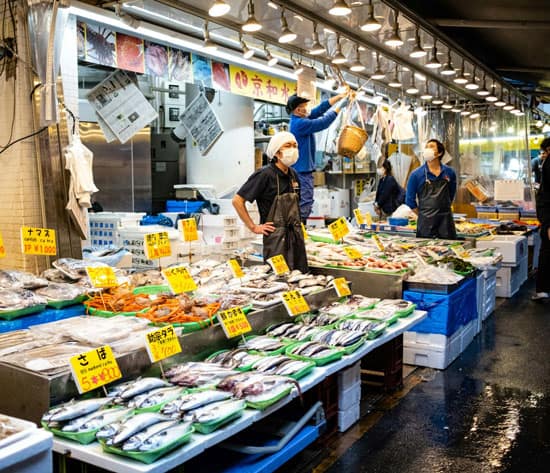
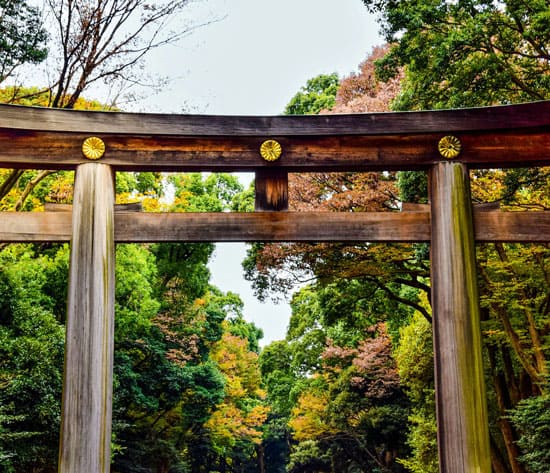


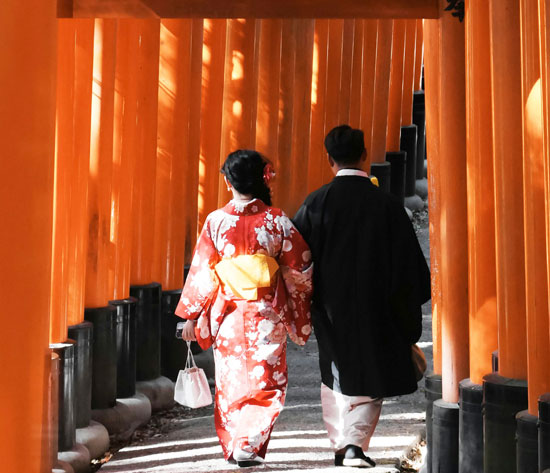
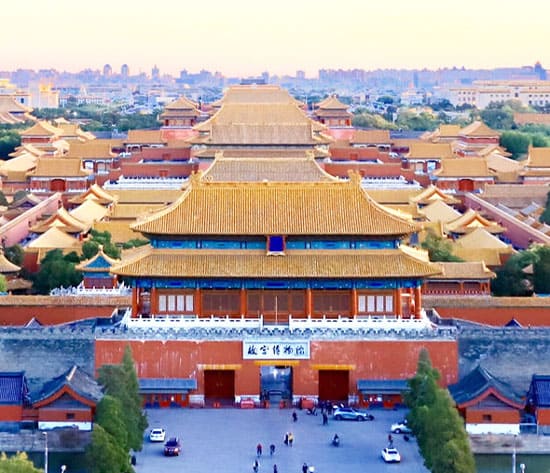
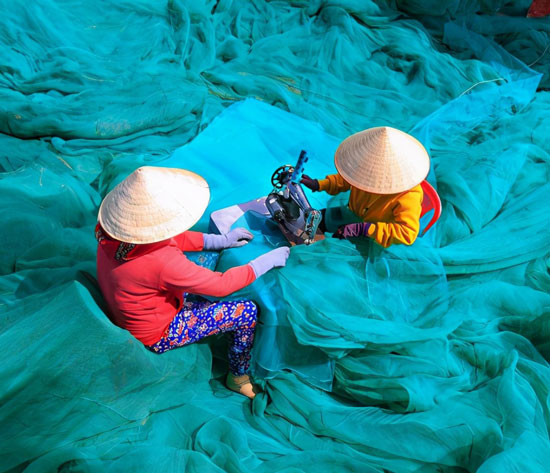
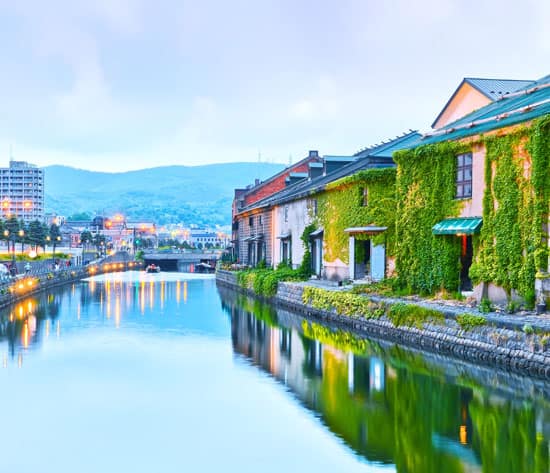
Have a Question?
You might see your comment appear on this page, but your email address and full name will not be published. Your personal information will remain confidential. Our Asia travel experts will get back to you as soon as possible. Required fields are marked *